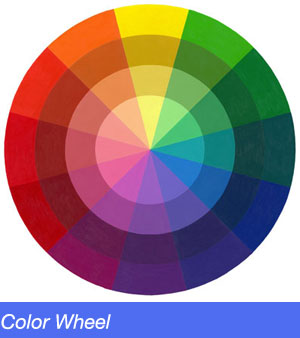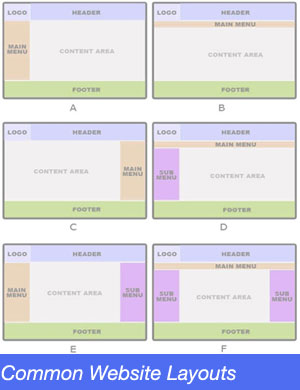
Website Design – A Closer Look
Web designers must always begin by considering a client’s website objectives and then move on to an Information Architecture (IA) to set a website’s information hierarchy and help guide the design process. Next, web designers can start creating wireframes and finally move to the design stage. Web designers may use several basic design principles to achieve an aesthetically pleasing layout which also offers excellent user experience.
Design Principles
Balance – It’s important for web designers to create a balanced layout. In web design we refer to heavy (large and dark colors) and light (small and lighter colors) elements. Using the correct proportion of each is critical to achieving a balanced website design. Page layout is equal parts art and science. Creating something that’s visually attractive and unique takes an artist’s eye. However, there are several very easy to follow guidelines that you can use to create solid layouts that work for any number of cases. These principles include choosing and sticking to an alignment, structuring your whitespace properly and highlighting important elements through size, positioning, etc.

Contrast – In color theory, contrasting colors are ones placed opposite one another on the color wheel (see also complementary colors). Web design offers a few other areas where contrast is applicable. Designers look at contrasting sizes, textures and shapes to define and draw attention to certain sections of the website.
Emphasis – We touched on this a bit when discussing contrast. Emphasis is a design principles founded in the intentional “highlighting” of certain important elements of the website layout. It’s important to note that if you emphasize everything on the page you end up emphasizing nothing. Imagine a page in a book where 80% of the content is highlighted in yellow…does anything really stand out? This is the time to take a look at that Information Architecture for direction.

Consistency – Consistency is a golden-rule in design. To provide a quality experience to your users it is essential that you are consistent in both design and content of your websites. Consistency is the biggest factor that separates a negative experience from a positive one.
Think of it like this: You’re at home in your kitchen and you’ve just prepared a meal. You open your cutlery drawer to collect a knife and fork and you begin to enjoy your meal. It didn’t take you hours to find your cutlery because you instinctively knew exactly where it would be. The cutlery was in the same place as it was last week, and the week before that, and the week before that. You managed to quickly complete this task, almost subconsciously, because it was a consistent design experience.
The same instinctive user-experience should be apparent on your website too. It’s important to remember though, just because you know where your content is, doesn’t necessarily mean everyone else knows. A consistent website is familiar for users and therefore easily navigable. Users should be able to find the information that they’re searching for effortlessly.
Please contact Jim Whalen Online with any questions, or requests for further information.
